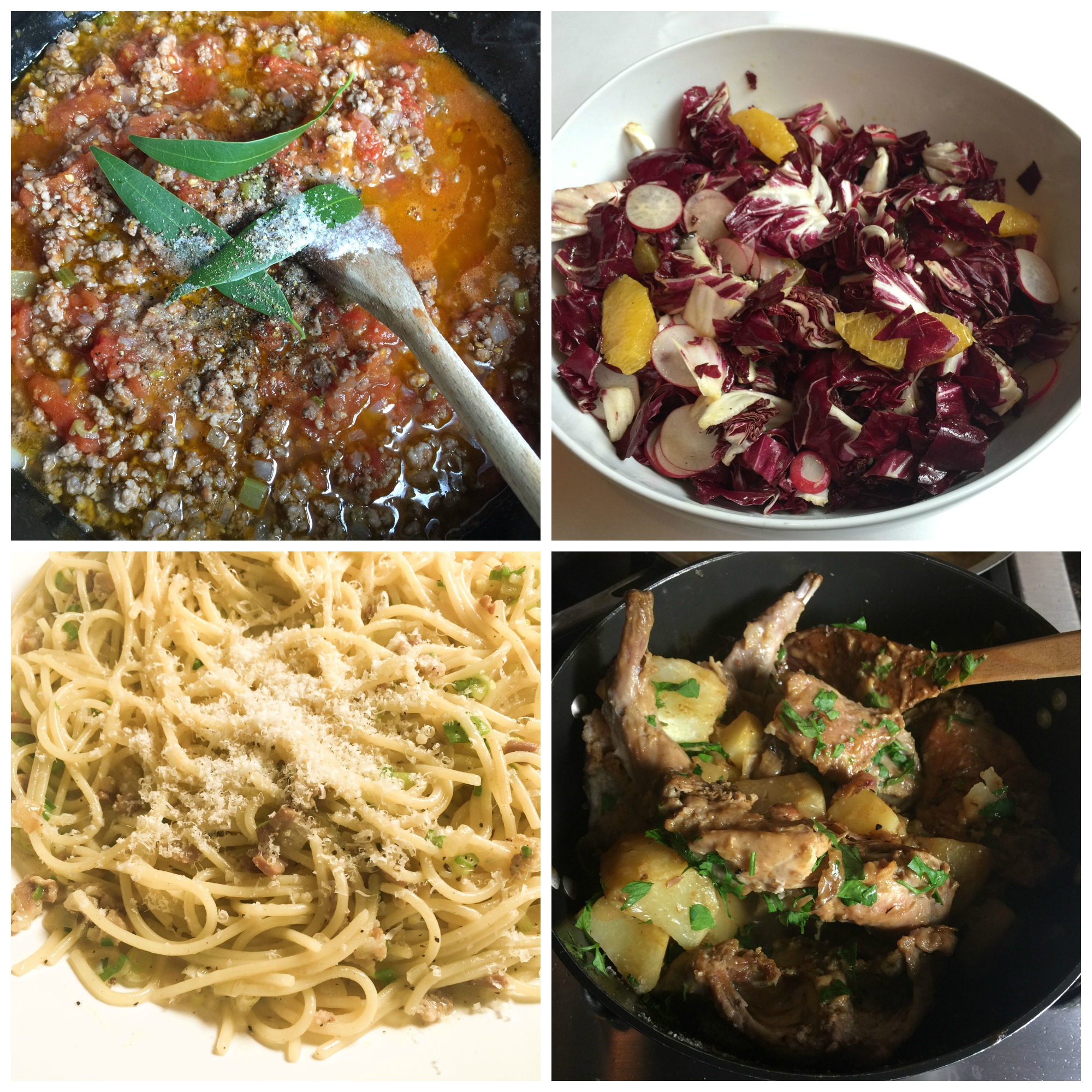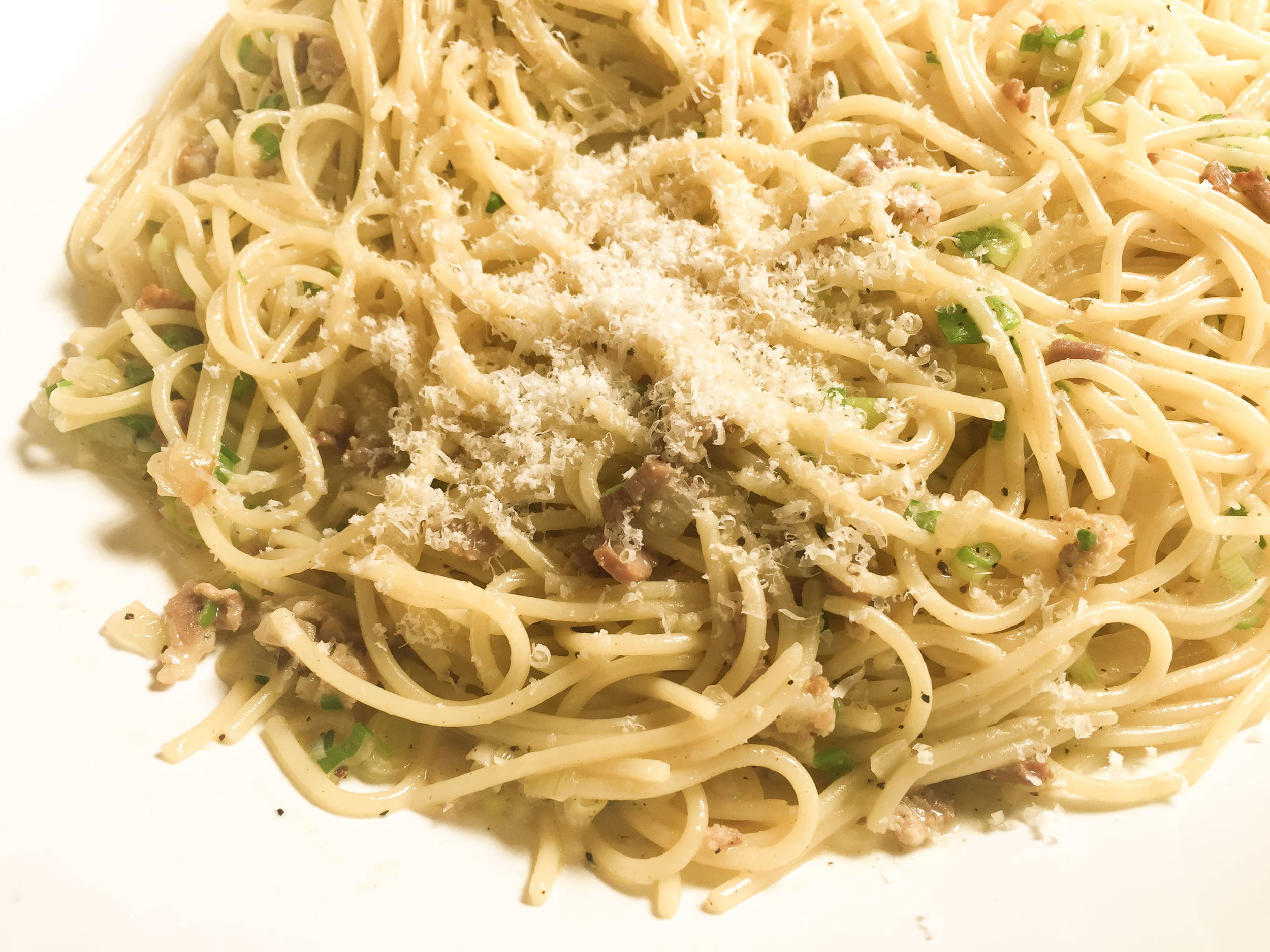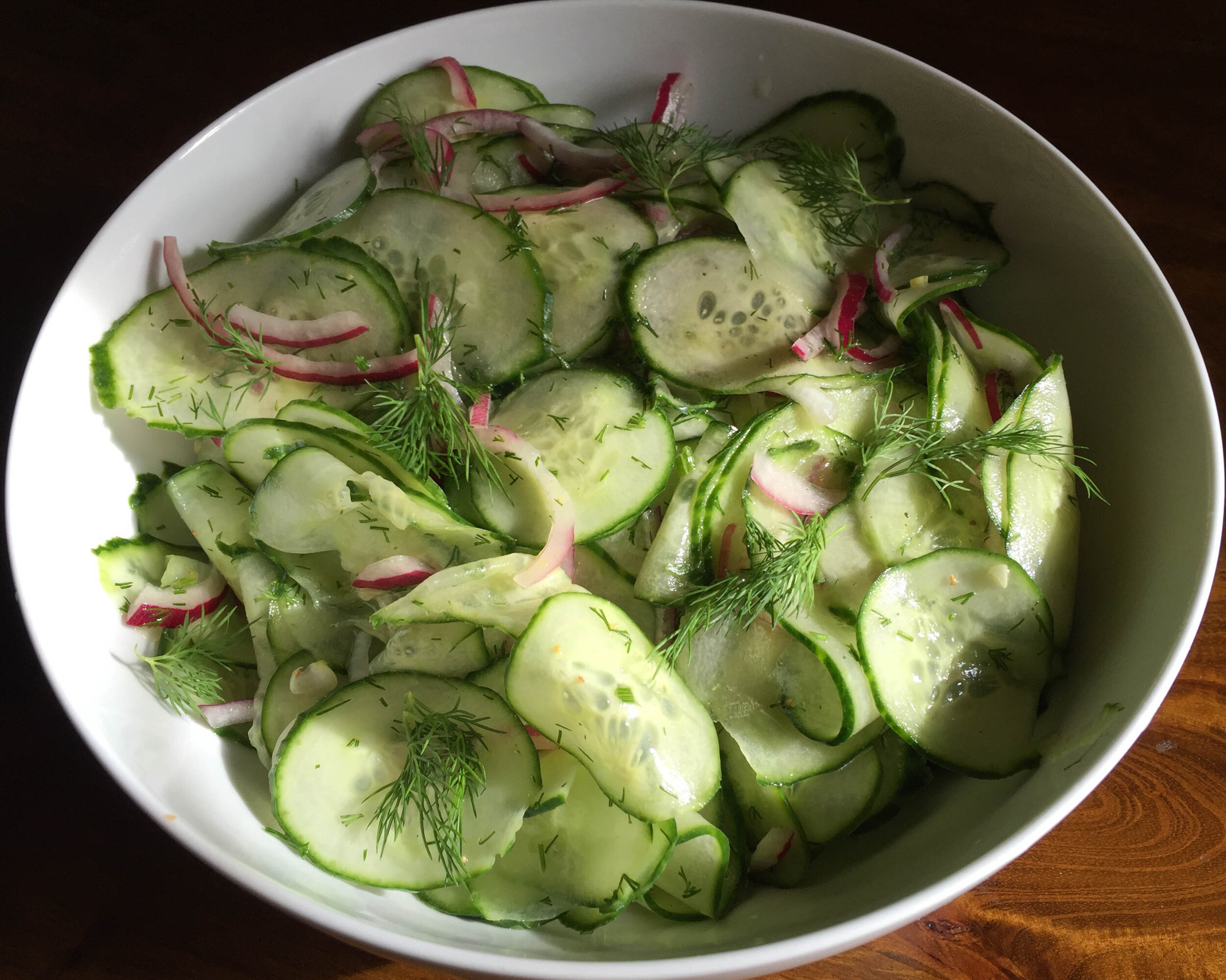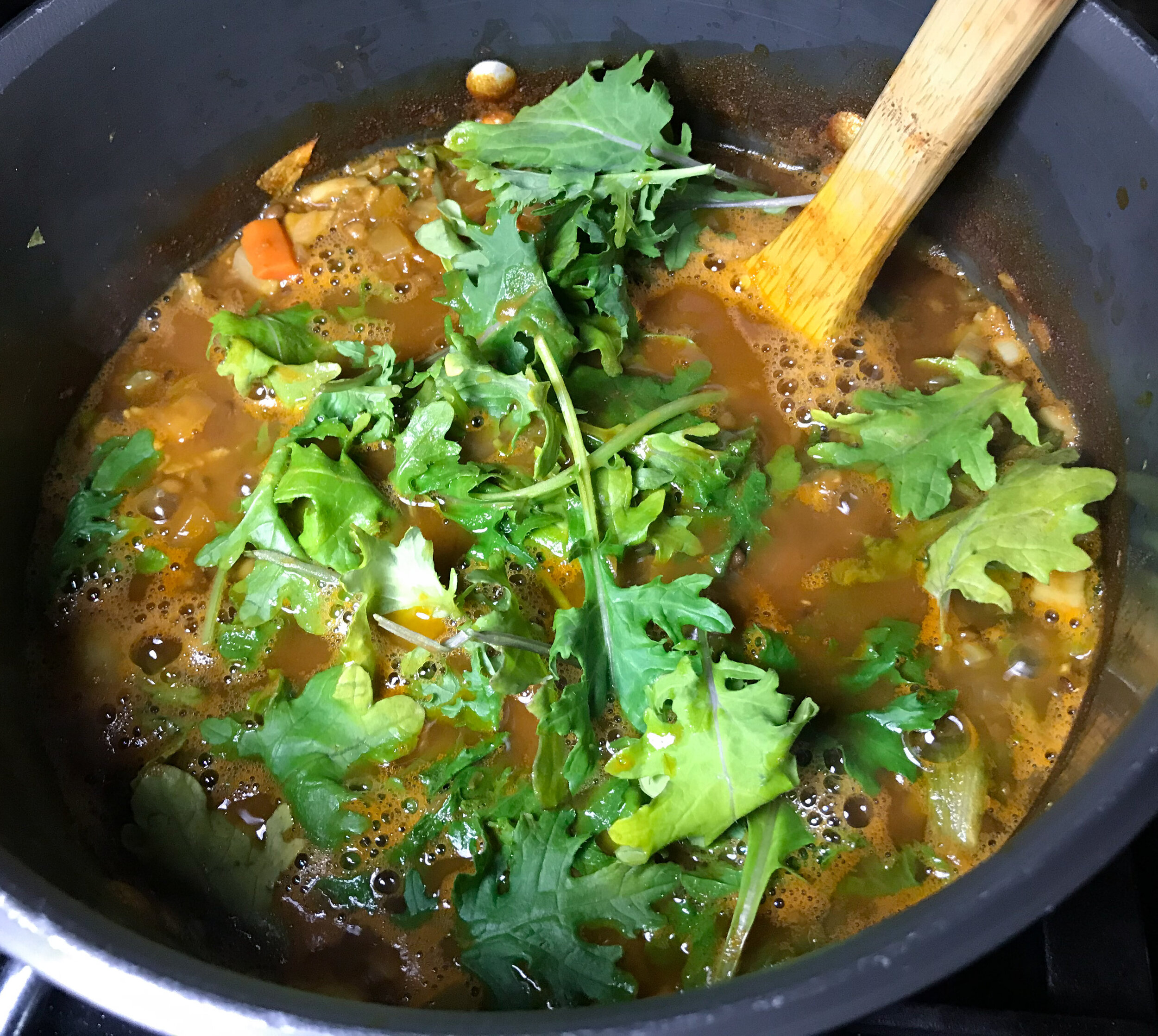When a nation of restaurant-goers turns (almost overnight!) into a society of captive home cooks, the stresses caused by fridge management can be monumental.
Keeping everyone in comfort food is easy: There’s pasta and cheese for that. Rice concoctions galore. Potatoes are a no-brainer in any form. Pizza is a track-pad click away.
Still, you diligently keep the fridge stocked with healthy fresh things: broccoli and kale, carrots and cauliflower, Brussels sprouts, salad greens and herbs.
So that by Sunday, the crisper drawer is stuffed with stuff that’s not so crisp, and you’re left beating yourself up about waste. Meanwhile, what are you going to put on the dinner table in the coming week?
If besides all that stuff you can rustle up a few basic staples, I’ve got great news for you: You can turn those hapless refrigerator victims into a Sunday super-soup that’s so incredibly flavorful that no one would ever suspect you of anything so nefarious as using up tired greens. It’ll solve the coming week’s lunch question and provide a dinner or two — all while saving money and helping you dodge a food-waste bullet.
It gets even better: You can pack the soup with an arsenal of life-affirming, enchantingly aromatic spices and herbs that turn the whole project into an anti-inflammatory, anti-oxidant, flavonoid-rich powerhouse. It is vegan and gluten-free, and therefore sends you into the coming week feeling vital and positive. That gigantic pan of bacon-enriched mac-and-cheese you devoured on Thursday, washed down with three glasses of wine? It is vitamin water under the comfort-food bridge. Today is a new day.
The essential staples you’ll need: onions, carrots and celery (diced together they make what the French call mirepoix); lentils; a can of tomatoes; olive or other oil; salt and pepper. These, plus water, form the base of the soup. And if you follow our master recipe, that’s all you really need for a delicious one. The basic outline is sweat the mirepoix in oil, add lentils, tomatoes, water, salt and pepper, bring to a boil, reduce heat and simmer till it’s soup — under an hour.
Our master recipe — which we first wrote about pre-Covid, in a story back in January — explains how to incorporate all those vegetables crying for rescue from the fridge: everything from root vegetables (turnips, parsnips, celery root, beets) to Brassicaceae (broccoli, cauliflower, Brussels sprouts and whatnot) to fresh legumes (string beans, peas and such) to leafy greens. The veg can be raw or cooked, so that small dish of roasted cauliflower with Punjabi spices left over from Friday dinner can find a new life in a lush (and zero waste!) soup, and the lonely cupful of sautéed greens from four days ago may gain delicious new purpose.
And you’ll want to spice it up: turmeric, coriander seed and cumin seeds are great places to start; ginger and garlic are your aromatic allies; fresh and dried chiles are always welcome; nigella seeds and flax seeds add nutritional heft; so do mushrooms, dried or fresh. Herbs — fresh and dried — are superb additions.
Again, our January story gives a lot of the health background and zero-waste benefits. Give it a read first if you’re interested in making the soup as powerfully healthful as possible. Otherwise, I invite you to explore the recipe.
And then take a deep dive into that crisper drawer and make soup!




































































